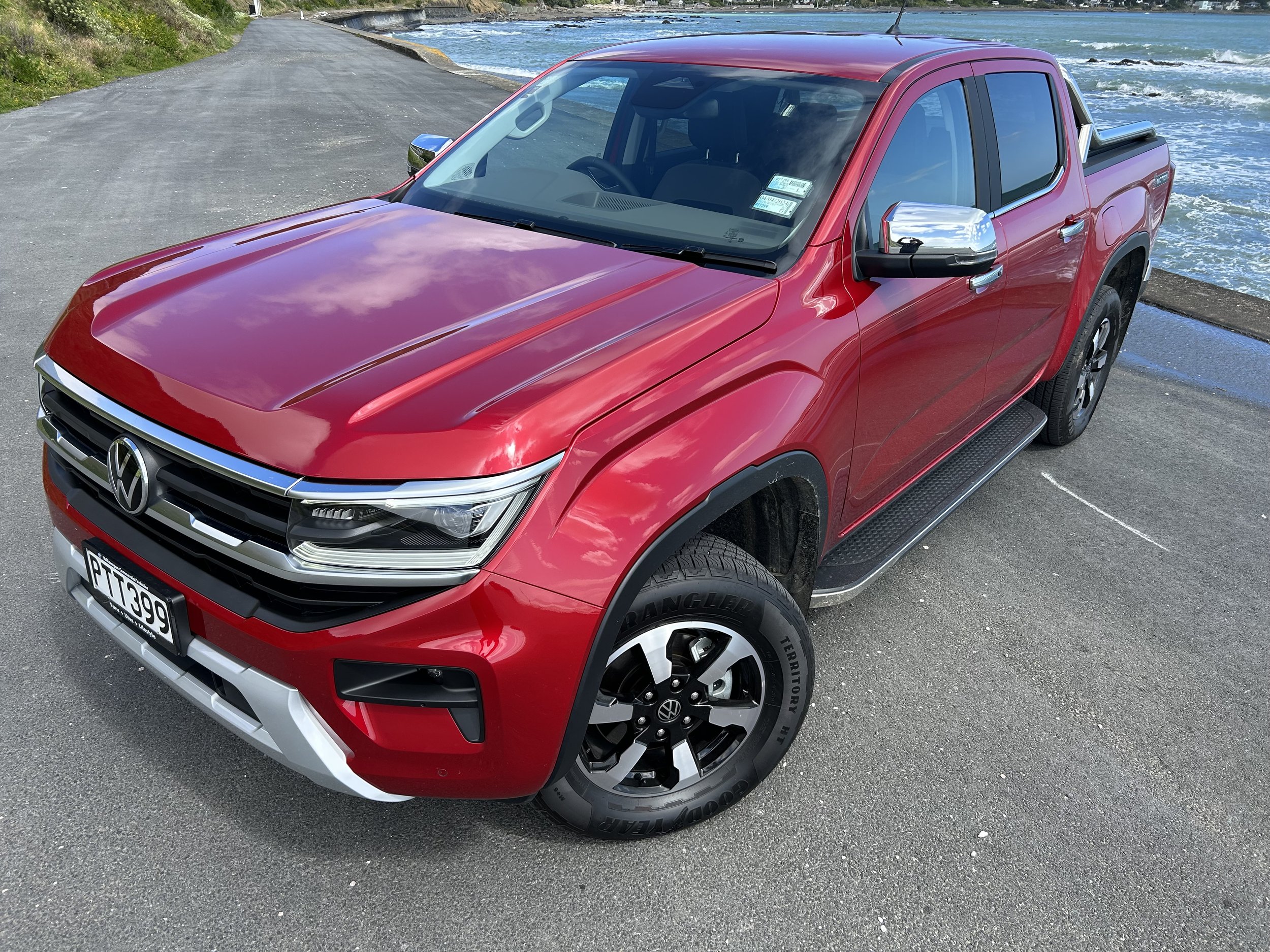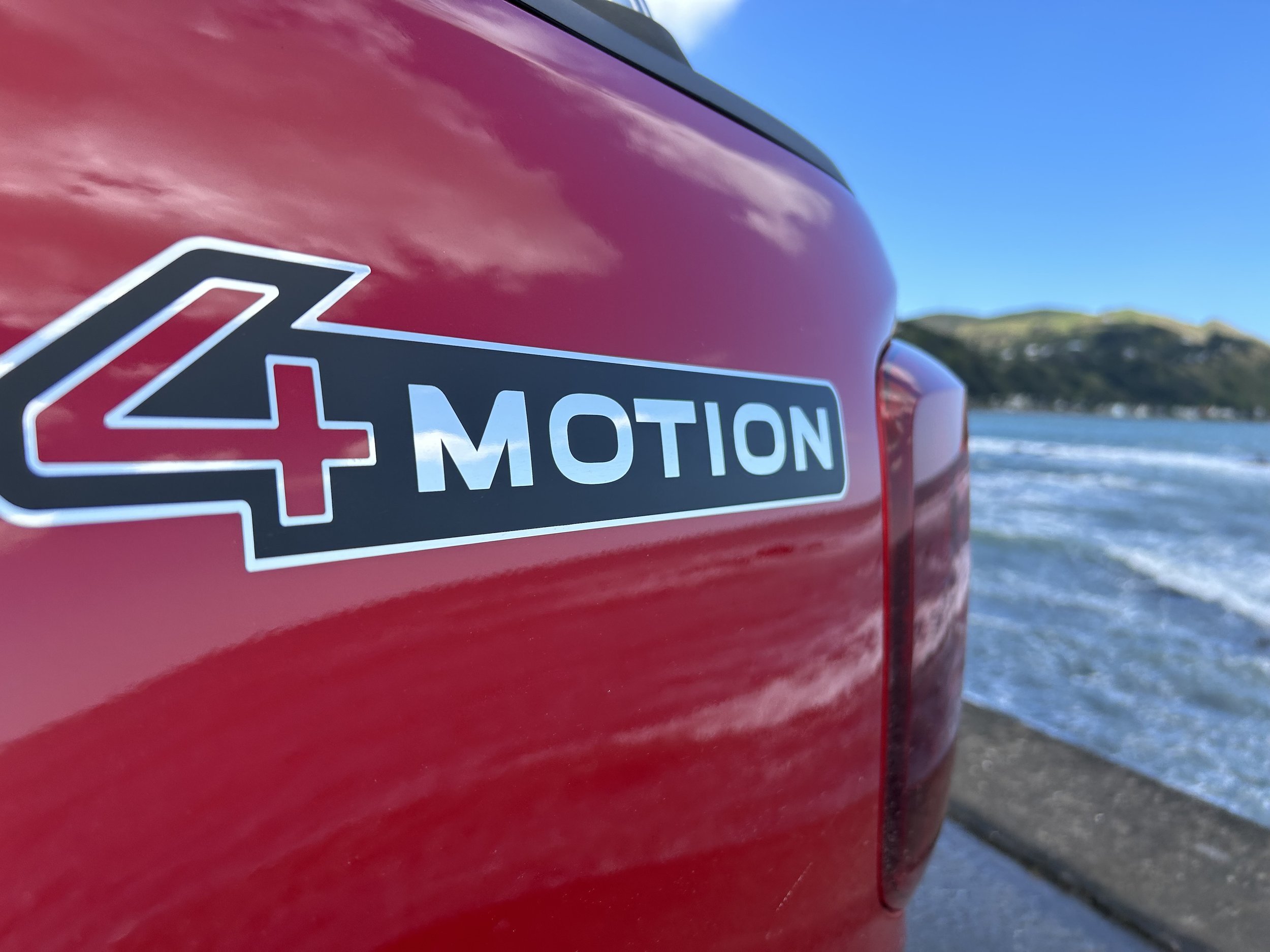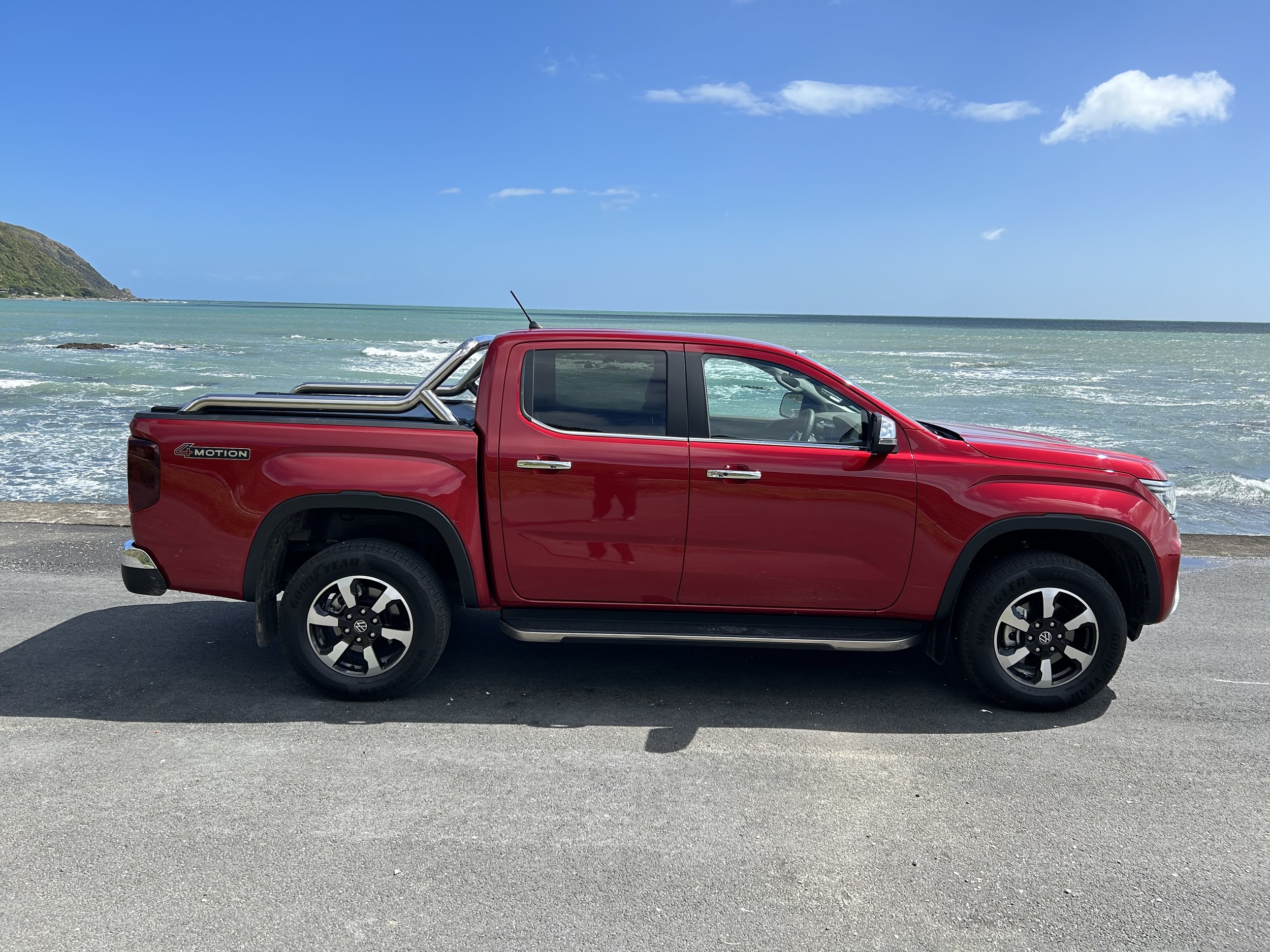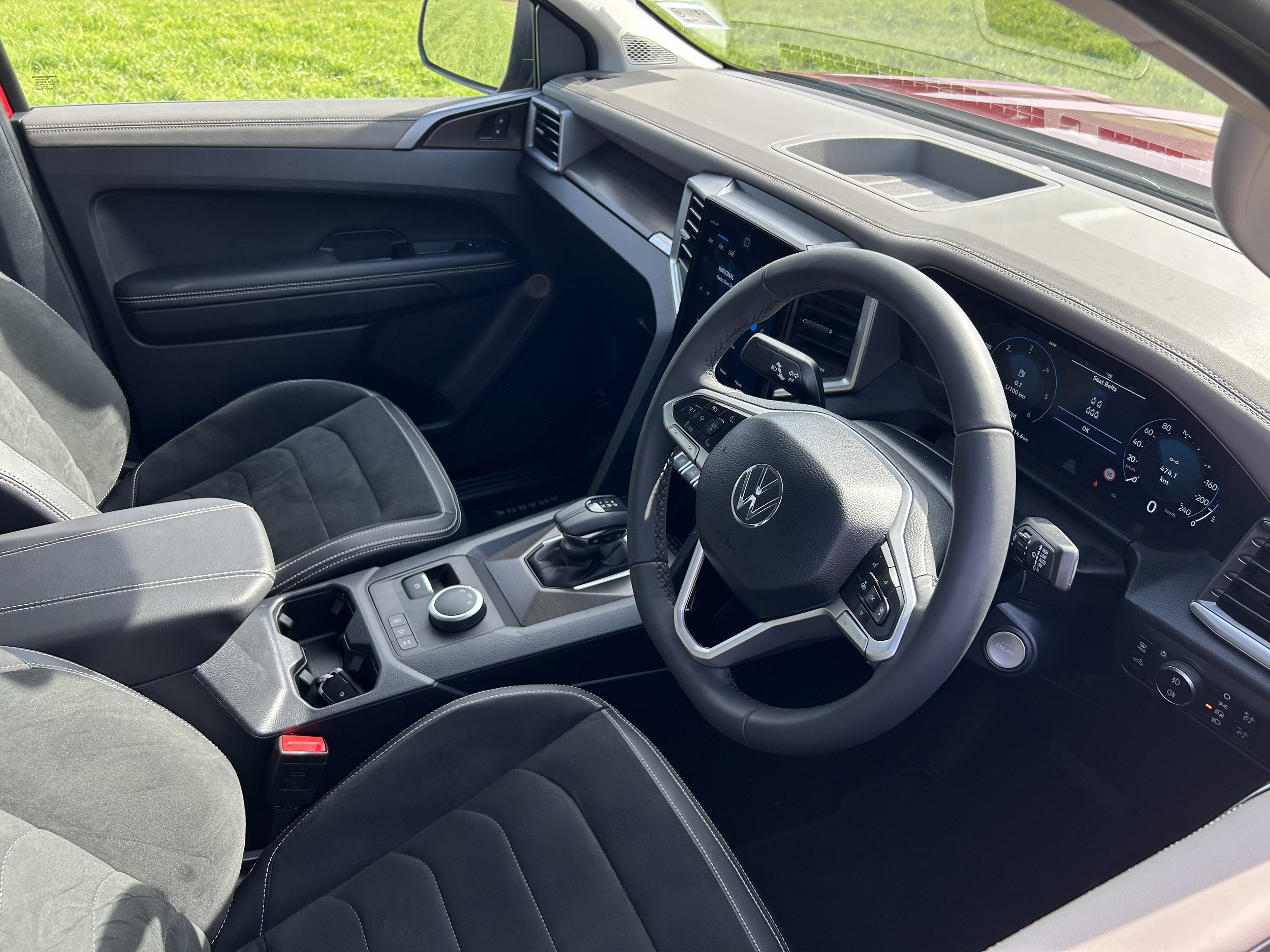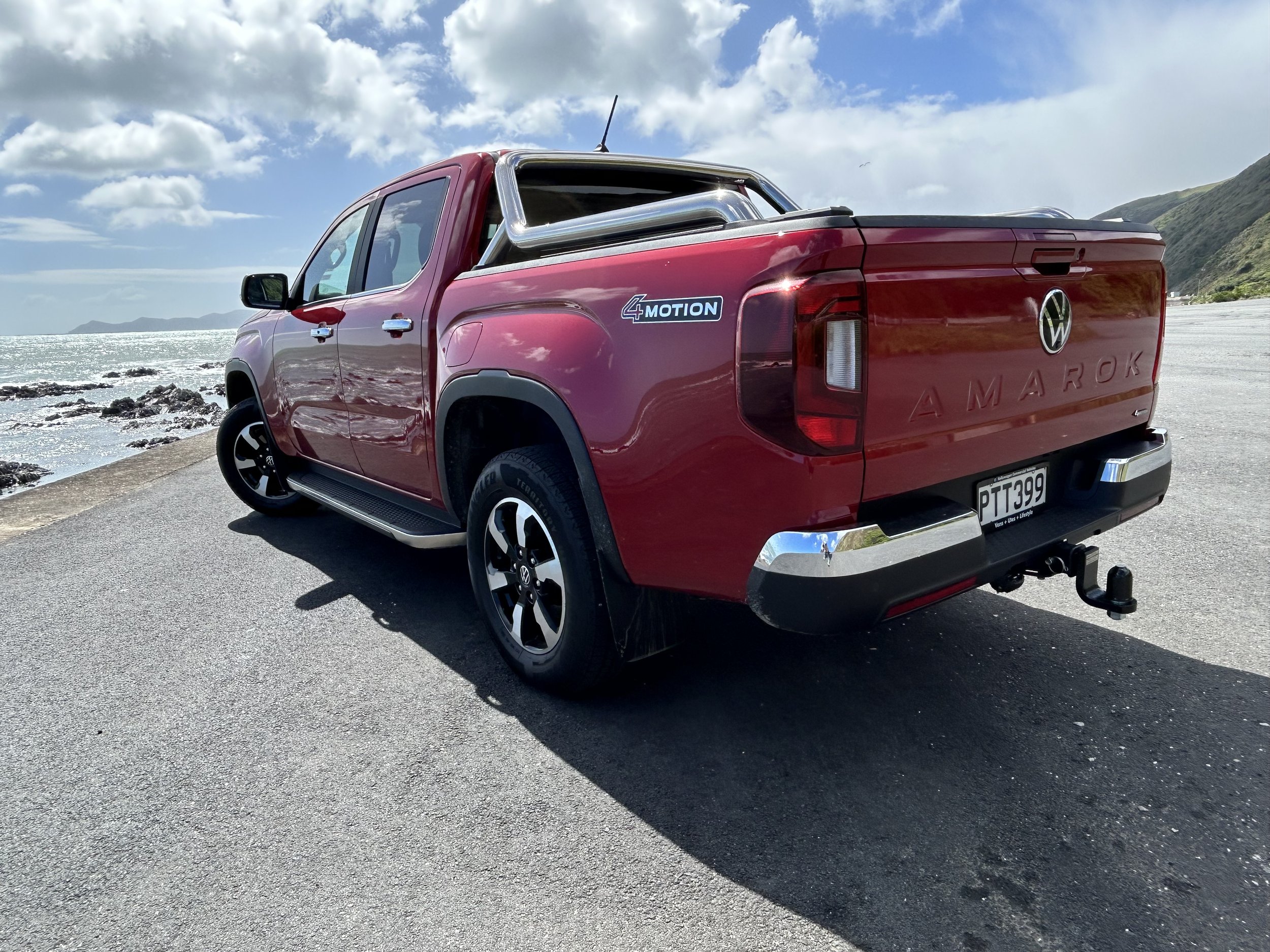Volkswagen Amarok Style roadtest review: Smooth operator
/It’s still a ute, but the ‘people’s car’ revisions make quite a difference.
Price: $75,000.
Powertrain and economy: 1996cc twin turbocharged four-cylinder diesel, 154kW/500Nm; 10-speed automatic; part-time four-wheel-drive, 8.3L/100km.
Vital statistics: 5350mm long, 1886mm high, 1910mm wide, 3270mm wheelbase, 18-inch wheels.
We like: Upscale cabin design; great front seat; unladen ride quality; safety equipment.
Not so much: Equivalent Ranger has more kit for little more spend; four-cylinder is logically better ... but V6 still has emotional appeal.
SETTING aside sentiment about whether ute tax seems right or otherwise, there’s no evidence of it having had tangible impact on the category-dominant offer.
While buy-in of some lower-profile utes has waned in the Clean Car era, it’s possibly not because of the regulation, but perhaps more because their fans have abdicated to the most dominant type.
However that goes, all the stats suggest Ford Ranger has been feeling no real pain.
Sales are still strong, it’s often been the country’s best selling new vehicle in any given month - and topped the charts last year. In accounting for 70 percent of Ford NZ’s volume in 2023, this model is emphatically the vehicle that keeps the lights burning at company headquarters.
If you’re not a fan of high CO2 outputting vehicles, or don’t like the sight of big tray decks in general, that might seem a problem, even an outrage. If you enjoy a vehicle whose span of talent is particularly broad, doubtless there’s different sentiment.
But, anyway, Ranger is the king, well ahead of second-placed Hilux, also still patently popular, but whose volume has been carefully managed by Toyota NZ to conform to corporate intent to reduce fleet-wide CO2 counts.
With Ranger keeping on trucking in face of anything chucked at it, you might wonder how those selling its technical twin feel.
Actually, Volkswagen New Zealand Commercials is playing it cool.
They’ve certainly no beef with Amarok now being so very Blue Oval-blooded. They figure customers will also see benefit from a deal that allows VW to put its badge, styling but little else on a model that is Ford developed and Ford built, in a Ford factory in South Africa.
However, when it comes to volume aspiration? Different league. The annual cited target for Amarok is a count Ford would expect Ranger to accrue in eight weeks. Realistically, then, for 2023, for every one VW registered there will be 10 Fords.
Maybe that’ll change now there’s a change of management in the Beehive - though it will pay to remember that, even if election promises are kept, utes (an all other high CO2 vehicles) aren’t off the penalty chopping block. Dropping Clean Car Discount isn’t a panacea - there’s still the Clean Car Standard, that whacks distributors. It’s a big cost and they won’t wear it alone.
Back to the Amarok. As much as the gameplays are different, with a chassis, electrical architecture and powertrains all shared, it and Ranger are hardly miles apart, even though they might appear to be - given that the only external shares are wing mirrors and the glasshouse.
While no Amarok that is exactly akin to an equivalent Ranger, the Style 2.0-litre biturbo on test here comes cosily close: You can buy a Wildtrak in identical mechanical format for $990 more. I’d say that this makes those variants eligible for comparison.
In which case, where would you go? It’s almost a coin toss, really. The Wildtrak being the most popular trim for sales suggests it is viewed as the most complete variant in the Ranger family; it certainly is comprehensively-equipped. Slightly moreso than the Amarok Style, in fact.
Both use the 2.0-litre bi-turbo four cylinder, making an identical 154kW and 500Nm, hooked up to a 10-speed auto, with a part-time four-wheel-drive, various drive modes and a locking rear diff. VW includes an idle stop-start, not delivered to the Ford, and they’re equally well specified for safety, both active and passive.
Nine airbags including front knee, front centre and side curtain devices in a big improvement on old Amarok. Autonomous emergency braking (AEB) with vehicle, pedestrian and cyclist detection is fitted, as is adaptive cruise control with stop-and-go and speed sign recognition/response, lane keep assist, blind spot monitoring, rear cross traffic alert, a reversing camera and parking sensors front and rear. In short, when it comes to this stuff, it’s outfitted as comprehensively as a like-priced car. The five- star ANCAP crash test score reflects the value.
The VW has matrix-style LED lights that don’t feature on the Ford provision, but the Blue Oval rig otherwise takes all the features meted the Style and adds auto park assist, a 360-degree camera, lane centring for the active cruise and both front seats are powered, whereas on the VW that provision is for the driver only, though the chairs are heated. Unsurprisingly, the key is a Ford fob.
The Ford coming from Thailand the VW out of South Africa doesn’t seem to make any difference when it comes to build quality; VW’s rig having FoMoCo etched into the windscreen reminds that it’s also out of a Ford plant, too, so presumably made to the same quality control guidelines. No rattles, no squeaks, no misaligned panels, no paint issues.
For all that, if measured for perception of quality of presentation, the Amarok sis not only patently touched by a different design approach but also a different ethos.
That’s not so apparent from the outside as within. While the dimensions are similar, each wears a unique look, the Amarok with a familiar VW front end, a sports bar atop the wellside and AMAROK stamped across the tailgate.
Sure, a ute is a ute: Blocky and tall. Overall, and unavoidably - because the deal did not allow for a complete change of metalwork - nose stylings aside, the exterior features are pretty similar. If you saw either this model or its Ford equivalent in silhouette from a distance, could you pick which is which. I like Amarok’s front. Do I like it more than Ford’s? Undecided. On a work site, maybe not so much as in a family driveway.
But there’s the nub of it, more fully exploited within the VW’s cabin. Here all the basic elements are identical, yet every important connect - visually and in touch - is altered in some way.
Save, that is, for the gear selector. You have to think that the Ford’s approach of a simple switch to effect a manual over-ride will hugely wrankle with VW, because it’s simply a very poor piece of design. Had their any way to alter it, Wolfsburg would have.
Even so, their touch is very evident elsewhere, and it’s all the betterment of occupant involvement. The while cabin just imparts a more professional-looking ambience, but not as might read that to mean. Professional means lifestyle, not work.
Ranger is of high quality, but in every model there’s sense it has been outfitted with expectation that dayglo jackets might might be hung off the seat backs and that those pedal will be touched by workboots.
Amarok has the same hardy, robust trimmings but it just looks flasher. It has higher-quality materials throughout, particularly on the seats. There’s also leather on the dash and door innards. To me this reflects brand recognition of the real truth about utes of this calibre - that they are predominantly bought as family-duty and weekend fun totems. They are emphatically car substitutes and the more that an air of a passenger model can be imparted, the better.
The end result is an environment that, overall, isn’t any different to Ford’s in terms of spaciousness and so on, but in detail is a world apart.
That Amarok has its own steering wheel and that VW has relocated the indicator to the left side of the steering column is just the start.
One big change for good is VW’s decision to redesign the front seat. The squab is shared with Ranger, but more heavily bolstered and with firmer foam, while but the seat back is from Germany. That cannot have been cheap but it pays off. It’s a massive revision that Ford needs to buy into, assuming it can under their agreement. It’s perfect for my frame; I drove the Amarok for almost 400 kilometres in one sitting and found it exceptional.
Also better for VW’s redesign is the main instrument console. It’s also completely electronic, as is Ford’s, but in appearance is utterly to analogue convention; so dials rather than bar graphs. VW could be accused of conservatism, but when it comes to the logics and at a glance coherence, the German way wins the day with me.
Another small thing, but Volkswagen sets a classier tone with its mix of colours and surface treatments. Grey and black isn’t racey, but it’s better than going all black, as per Ranger.
The big centre screen is functionally identical to how Ford has it, but the displays and fonts are from the German playbook. Ford’s use of hard buttons for the ventilation system is preferable, but otherwise VW’s detailing at the front of the cabin is better, including that it has better incidental storage.
But is it all up front? Seat row seating is just the same, but whereas a Ranger provides both kinds of USB plugs for occupants to utilise, VW expects those riding there to arrive with fully charged devices. Or a power adapter. There’s just a 12V socket in the VW.
Tray liners are standard, but are slightly different designs - just slightly enough that no aftermarket enhancements will cross-share. Amarok is a fraction wider at the tailgate and 110mm longer at the floor. There’s not even the same width between the wheel-arches – 1217mm for the Ford and 1224mm for the VW, which has a better payload capability of 1009kg versus 958kg.
Both have bed lights and fixed tie down points. Ford’s row of moveable rings along the top doesn’t come to VW; the test Amarok’s manual sliding shutter style tonneau is a cost extra. Buy Wildtrak and you get the same thing, but motorised, as standard.
Why VW hasn’t figured the value of Ford’s bed step in the bumper is a mystery. But trying to reach into the tray to reach something will curse its absence. Amarok arrives with a factory towabar - use, I made good use of it - with the same 3.5 tonne rating and 350kg down weight. Ford’s excellent integrated trailer brake control system is absent from the Germany product, but it has a trailer sway control; there were no issues from towing a single axle trailer with around 900kg on board.
When it comes to overall driving, they remind that even when a ute is well-sorted dynamically, to point of being almost car-like for balance and steering feel … well, it’s still a ute. Amarok had lovely ride when unladen, but felt all the more settled with weight in the back: In this instance, a load of race car rims, tyres and other odds and sods I’d been happy to take to a garage, about 180kms from his home.
VW has chosen its own springs and dampers, and that seems to delver less jitter, but like the Germans also going toward highway terrain rubber, whereas Ford choses all terrain shoes, is just as relevant.
Conceivably, that might make Amarok less resilient beyond tarmac, but again it’s VW recognising a reality that most utes don’t go there. As is, the Amarok has superior stopping distance, is less prone to cornering squall and there’s every chance it also contributes to it imparting a sweet steering feel. Rollover mitigation along with electronic stability and traction are standard on this model behind either badge, yet even with those actioning it’s rubber I’d prefer to have when driving a ute on wet roads, too.
As for the engine? The 2.0-liter does a good job, but the Style is priced so closely to a V6 Amarok the compulsion to buy into those two extra cylinders and suffer a high fuel burn, when the payoff is a silky smooth, acoustically-sweeter and more muscular powertrain, that also marries to a full-time all-wheel-drive rather than the part-time system here would be very hard to resist. If not impossible. Either way, it’s probable no-one will be buying until ute tax is gone.
If you think the four-cylinder is enough, then it will deliver an emphatic edge for economy, but most obviously when you tailor the truck to suit that. ‘Eco’ mode in rear-wheel drive is patently the most fuel-efficient setting.
Still, that part-time system is a compromise, now. What would add another element of reassurance is having four-wheel-drive always on your side, too.
But Ford’s system for the four cylinder is just like any other; designed for low adhesion surfaces. Even wet tarmac is too grippy for it. Taking the Amarok where you can use all-paw - in this instance a gravel road - reinforced why it should be standard on all utes. Amarok was extremely adept on a narrow country road that, having only been used for a national championship rally the week prior, was looking rather second hand; most of the gravel had been blasted off and the corners were rutted. But Amaork felt decent. It would happily wag its tail punching out of tighter corners but never felt wayward, and the suspension absorbed the holes and ruts with composure.
Ranger is the best ute in the market. Amarok is a different spin on the same formula. The VW treatment looks smart and has a more sophisticated look and feel, but it hasn’t quite as much kit.
VW’s designers have also managed to perform a masterful job disguising the Ranger. They’ve achieve their goal of making Amarok a little bit more contemporary, rugged and masculine, without being aggressive and too truck-like. The Style lives up to its name. But Amarok, like Ranger, is at its very best with constant AWD and that diesel V6.

